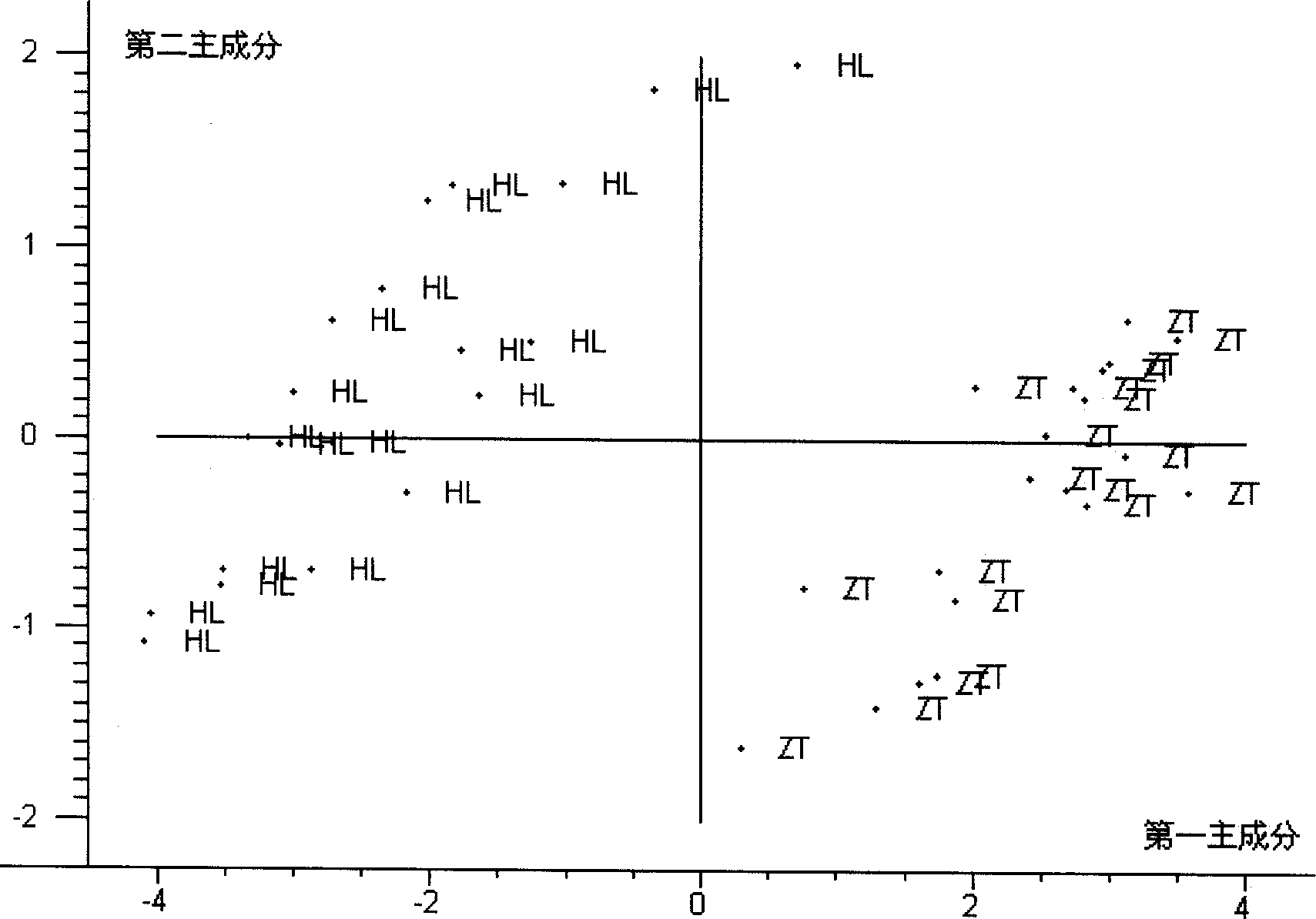Method for identifying red sandalwood by near-infrared ray
A technology of near-infrared spectroscopy and identification methods, which is applied in the field of quickly identifying true and false mahogany and wood species by using near-infrared spectroscopy technology, which can solve problems such as high cost, identification methods that are difficult to meet the needs of the market, and unsuitable for on-site detection.
- Summary
- Abstract
- Description
- Claims
- Application Information
AI Technical Summary
Problems solved by technology
Method used
Image
Examples
Embodiment 1
[0049] (1) Preparation of wood samples: select standard mahogany and fake mahogany samples, the surface of which is flat and free from pollution. The samples include eight types of mahogany in the standard and 18 kinds of fake mahogany obtained from the market. The fake mahogany includes artificial mahogany produced by methods such as dyeing, painting, impregnation, decorative paper veneer and compaction, and wood with characteristics similar to mahogany. sample.
[0050] (2) Collection of near-infrared spectrum: use near-infrared spectrum equipment to collect several near-infrared spectra at different positions on the surface of the wood sample. For the same sample, the spectra are collected at 3 to 10 positions, and the spectra are converted into one spectrum after averaging. Represents a sample; the wavelength range of the collected spectrum is 350nm-2500nm, and the spectral information from the visible part to the near-infrared short-wave region from 350nm to 1000nm mainly...
Embodiment 2
[0057] (1) In this embodiment, the preparation of wood samples, near-infrared spectrum collection, spectral pretreatment and classification of modeling samples are similar to the first to fourth steps in Example 1, the difference is that the partial The least squares discriminant analysis (PLS-DA) method was used to build the model.
[0058] (2) The partial least squares discriminant analysis (PLS-DA) method is based on the PLS regression method, and the spectral data and the categorical variables are subjected to multiple regression, and the discriminant process is mainly as follows:
[0059] ① Establish the classification variables of the training set samples, namely true and false;
[0060] ② Partial least squares regression analysis of categorical variables and spectral data, and establishment of a partial least squares discriminant analysis model between categorical variables and spectral data;
[0061] ③ According to the PLS model of the categorical variables and spectr...
Embodiment 3
[0065] In this example, the methods of wood sample preparation, near-infrared spectrum acquisition, and spectrum pretreatment are similar to steps 1 to 3 in Example 1, but the difference is that the mahogany sample is divided into eight Redwood species and fake rosewood are divided into one category, and then use the Soft Independent Modeling Classification (SIMCA) method to establish a model for distinguishing true and false rosewood and distinguishing redwood categories.
[0066] The verification of the discriminant model and the identification of mahogany are similar to the 5th to 6th steps in Example 2. The difference is that the discriminative model can not only identify the authenticity of mahogany, but also output the category of mahogany. The results show that the model can The mahogany and fake mahogany samples are correctly discriminated, and if it is mahogany, the category of the mahogany sample is directly output, and the correct rate is 100%.
[0067]It shows that...
PUM
 Login to View More
Login to View More Abstract
Description
Claims
Application Information
 Login to View More
Login to View More - R&D
- Intellectual Property
- Life Sciences
- Materials
- Tech Scout
- Unparalleled Data Quality
- Higher Quality Content
- 60% Fewer Hallucinations
Browse by: Latest US Patents, China's latest patents, Technical Efficacy Thesaurus, Application Domain, Technology Topic, Popular Technical Reports.
© 2025 PatSnap. All rights reserved.Legal|Privacy policy|Modern Slavery Act Transparency Statement|Sitemap|About US| Contact US: help@patsnap.com

